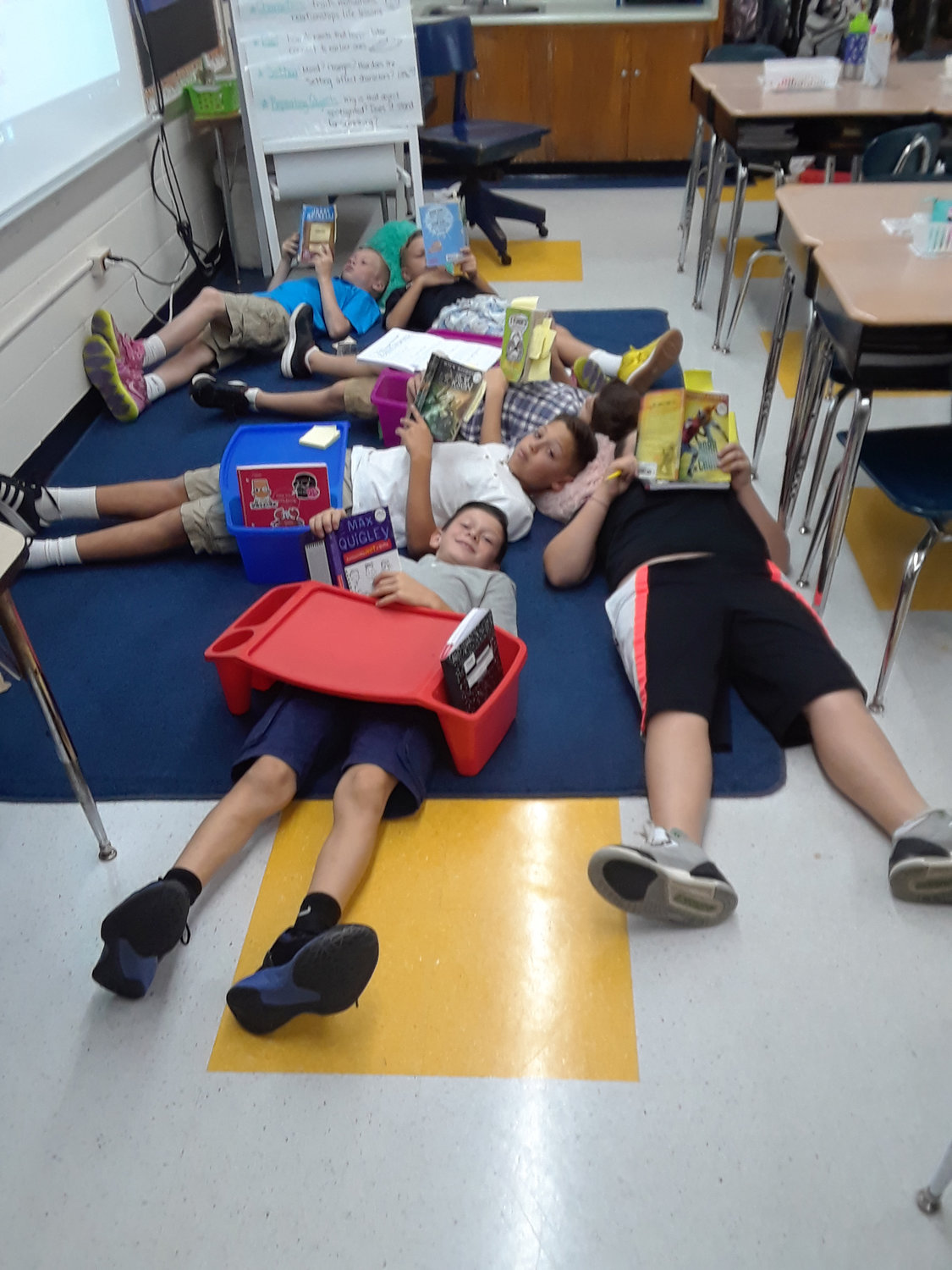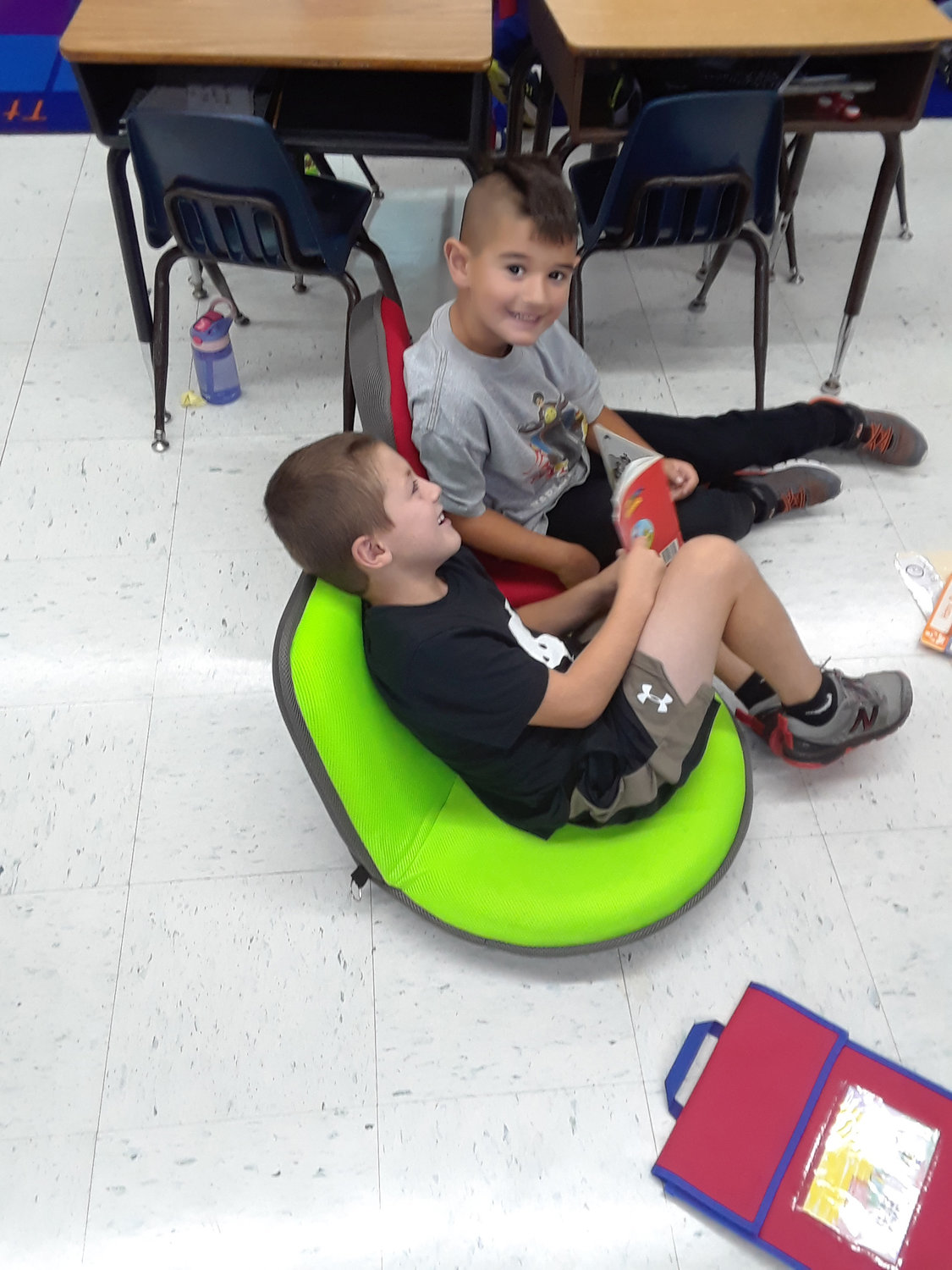Seaford, Wantagh schools institute flexible seatings
Flex seating keeps students' minds limber
Sitting by the security vestibule at Seaford Harbor Elementary School last week, a pair of venerable students’ desks made of cast iron and oak sat ready, at long last, for retirement. They were remarkably free of the coded messages of budding school romances typical of the vintage, but they wore their age in darkened shades from many summers of sanding and restaining.
Such Depression-era desks were typically bolted together in groups of five or six in the ancient schoolhouses where they were once common (along with the Three R’s). They were a far cry from the modern flexible seating options that Seaford and Wantagh school districts have begun deploying as they transform their learning environments.
First-grade teacher Angelina Lee, who is in her second year at Seaford Manor and her fifth year as a teacher, understands the need for a variety of such options. “Some students can’t sit still,” she said. “So they can sit in surf chairs” — chairs with rounded bottoms, like rocking chairs, but with desks. Other options in her classroom included beanbags, standing desks and balance balls.
The idea that that environment contributes to learning itself isn’t new. In study after study in the past 25 years, classroom design has been shown to play a critical role in engaging children as learners.
“Environment is such a huge factor,” Seaford Manor Principal Debra Emmerich said. “When you think about it, students spend almost more of the time they’re awake in school than anywhere else. They should have the opportunity to learn wherever they learn best.”
Dr. Marc Ferris, assistant superintendent for instruction and curriculum in the Wantagh district, agreed, and listed three factors that contribute to children becoming superior learners. Students need to feel safe and cared for; they need a sense of autonomy — that they are playing an active role in their own education; and finally, they need a sense of confidence, of understanding what is expected of them and why.
Before deploying furniture, Ferris stressed the importance of considering how the entire classroom space is to be used. “You can’t just design a middle school or an elementary school classroom with a bunch of couches for reading,” he said. “There has to be space for science labs — for all the different kinds of learning that are going to go on there. And you can’t just put stuff in the middle of a room. How is the periphery going to be used? You have to think of the whole room and all the activities it will be used for.”
One of the advantages of flexible seating is the way students get to know each other naturally, Emmerich said. Working in pairs or small groups, learning becomes more interactive and less teacher-centered.
“All of them are partners in learning,” Seaford Harbor Principal Thomas Burke said.
Administrators and teachers are enthusiastic about flexible seating, but cautious. “Partly, there’s a cost factor,” Burke said. “A lot of this stuff can last 20 or 30 years, and we want to be fiscally responsible. You don’t want to just go out and buy the new shiny thing.”
Emmerich said that Seaford teachers attended special training to help them understand how to integrate flexible seating in the classroom as part of the district’s philosophy of educating the whole child. After piloting the program in selected classes, both districts are moving incrementally toward wider use.
When students have the same favorites, some negotiate their choices using such time-tested methods as rock-paper-scissors. In other cases, first choice is a reward for good behavior. But “nobody can claim ownership of any seat,” Emmerich said.
Lee uses a system of pompoms. Each desk has a holder with five Popsicle sticks. For each reward, a small pompom is placed on a stick, and if students at that work space earn a full set, they are given first choice in choosing their next seating.
The students themselves are happy with flex seating. “I study better when I get to move around,” Harbor fifth-grader Angelo Mirabello said.
Angelo’s observation is supported by data, according to Ferris. “Elementary and middle-school kids need to move every 12 minutes or so” to maintain concentration, he said. High school kids need to move at least every half-hour.
Parents’ reactions to flex seating are mixed, Ferris said, with few neutral responses. “They’re either really supportive — ‘I wish they’d had it when I was in school,’” he said, “or they don’t like it at all, and think their kids should learn the way they did: in rows, with rote memorization.”
In order for flexible seating to work well, classes can’t be too large. “You have to be able to keep your finger on the pulse of the students,” Emmerich said. Ferris said that the optimum number of students per class was about 24 students, with a maximum of 28.

 44.0°,
Mostly Cloudy
44.0°,
Mostly Cloudy 







